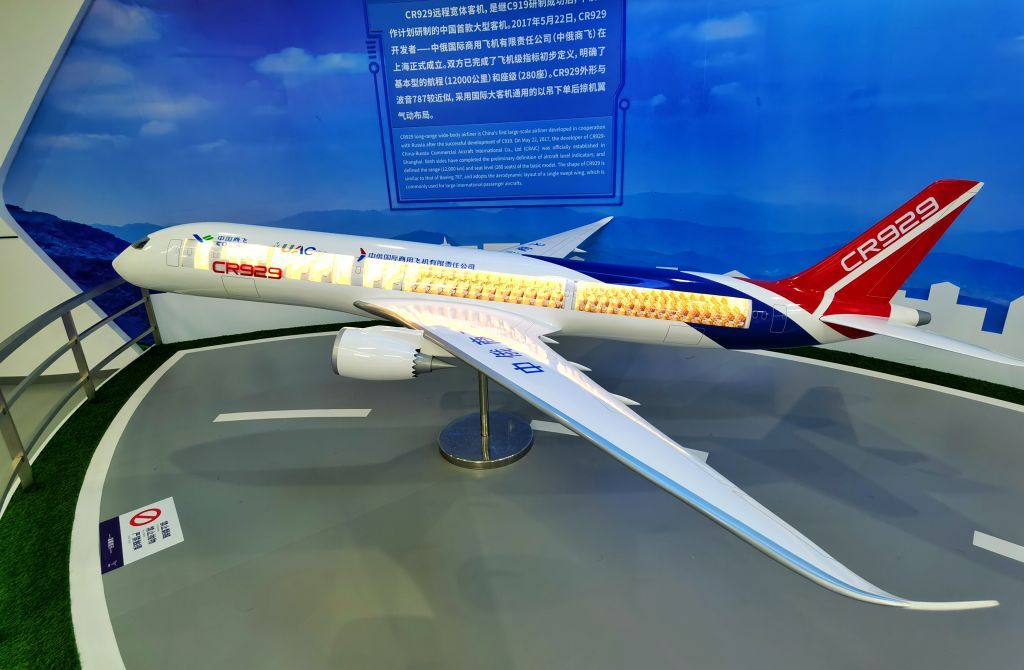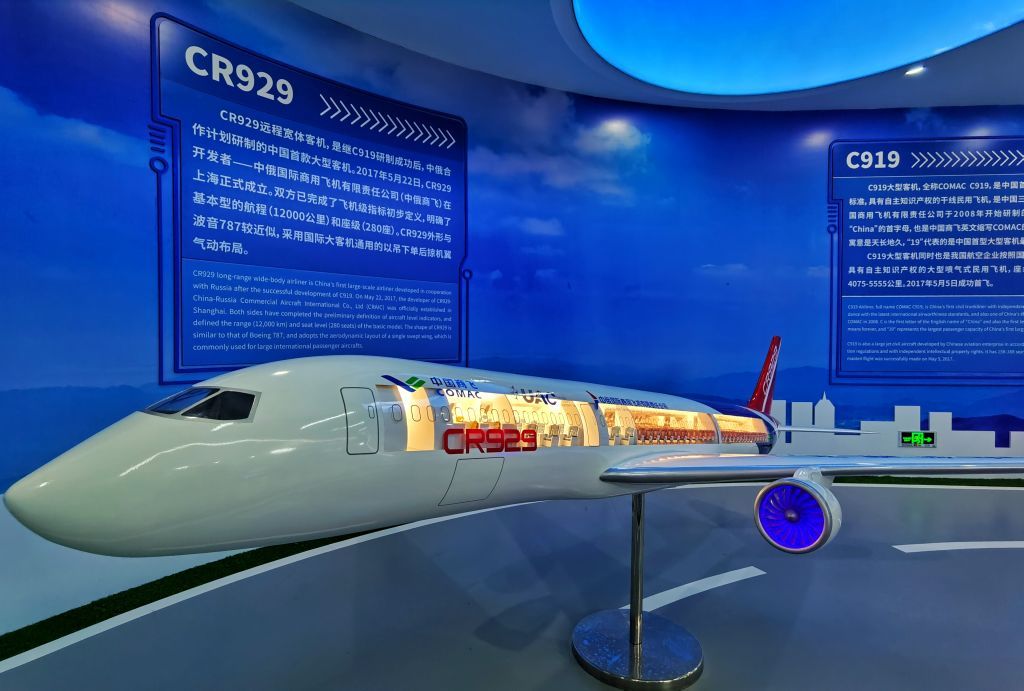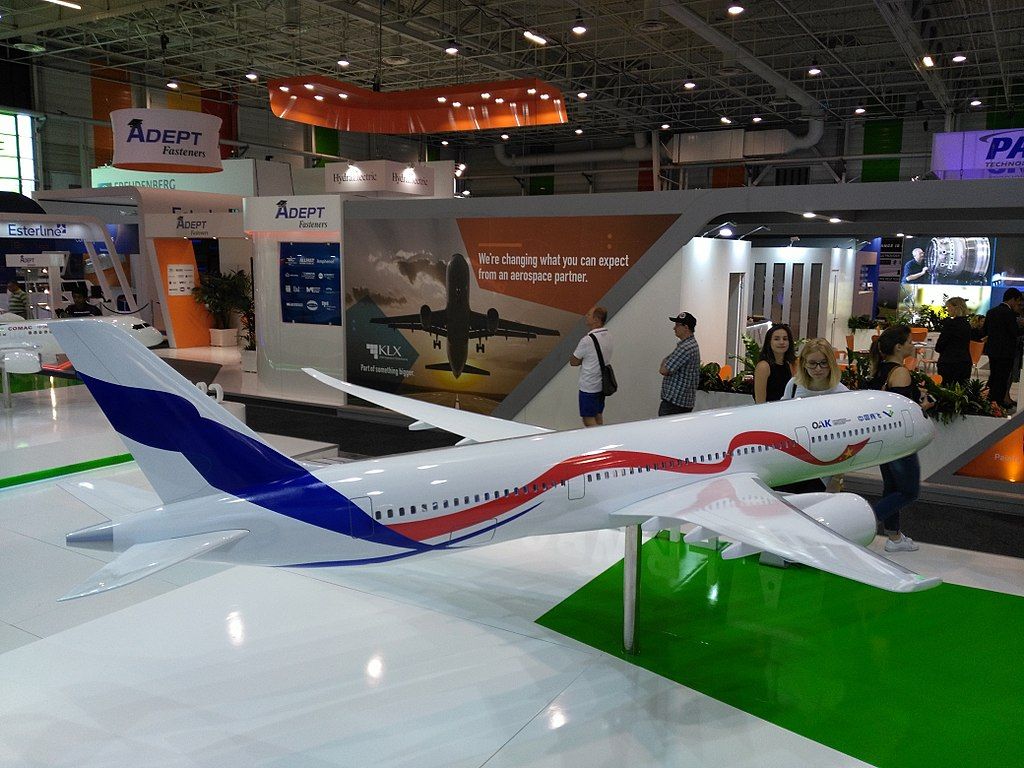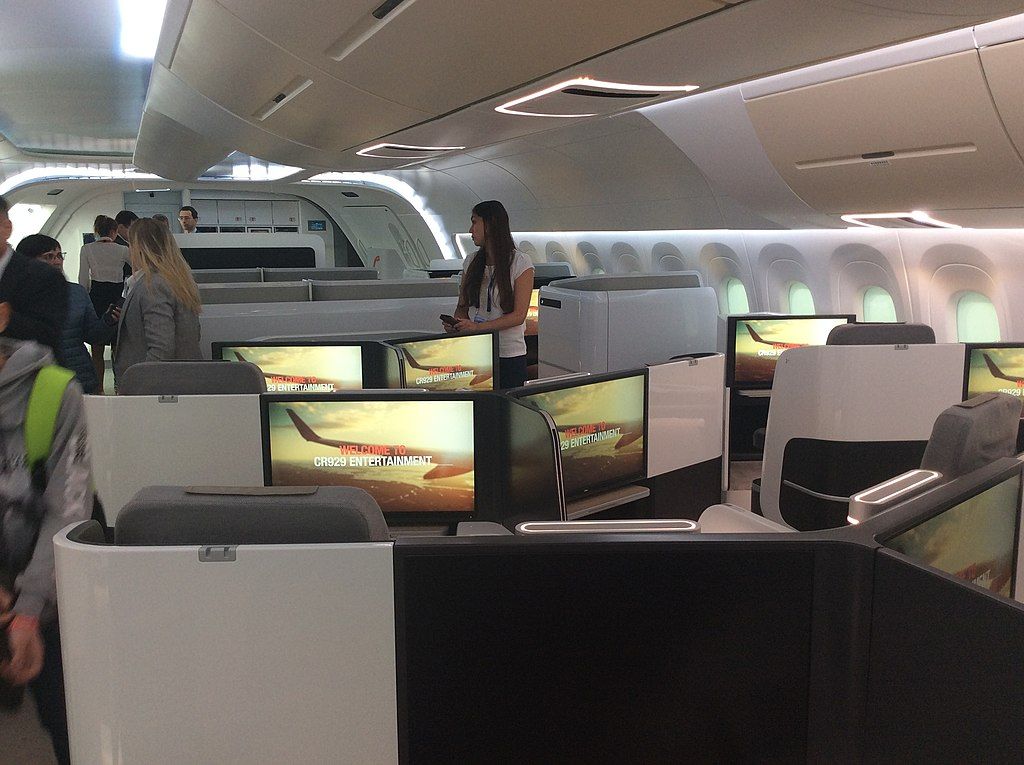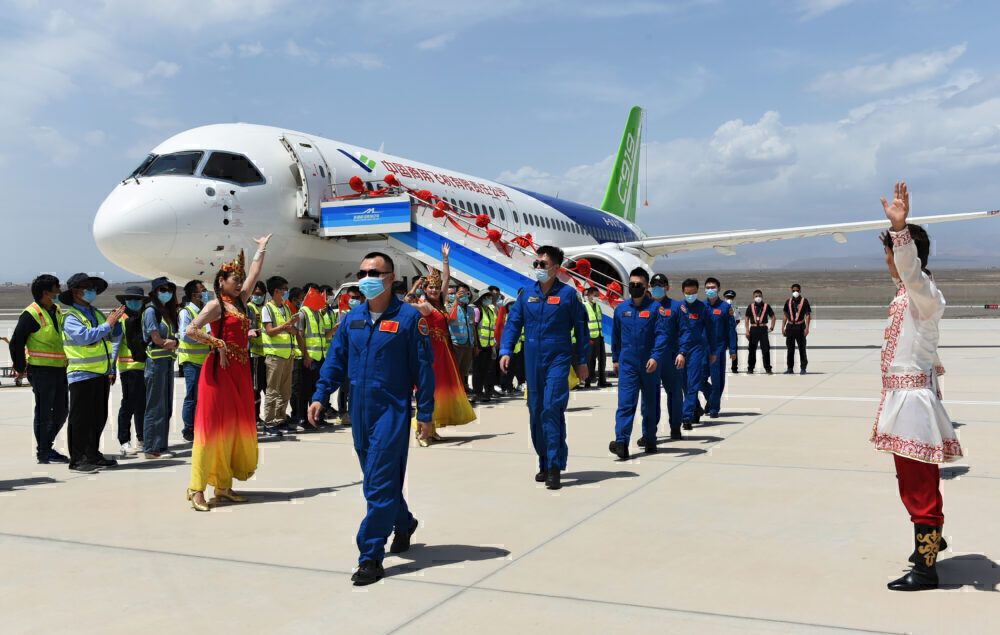The invasion of Ukraine by Russian forces back in February could have a significant impact on the future development of the CR929 - a wide-bodied airliner being developed by CRAIC, a consortium made up of Chinese and Russian aircraft manufacturers. Let's further investigate what the future might hold for the proposed aircraft and the consortium itself.
Ukraine changes everything
With the conflict in Ukraine starting to be counted in months rather than weeks, the impact on global aviation has become apparent. The world's major leasing companies have been scrambling to recover aircraft placed with Russian airlines. The price of oil (and therefore aviation fuel) has risen, airspace warnings have been issued, and certain airlines have had to re-route services on key routes.
Sanctions imposed by many countries worldwide are beginning to bite, including goods and services provided to Russian companies in the aerospace sector. Manufacturers based in the country are finding it increasingly difficult to source titanium due to supply chain issues resulting from the sanctions. Indeed, Russian aircraft manufacturers have seen certification for their products suspended due to the invasion.
What is the CRAIC CR929?
Given the sanctions and the subsequent pinch-points that they undoubtedly are creating, it is somewhat surprising that there has not been an update regarding the development of the CR929 airliner. The CRAIC CR929, formerly known as COMAC C929, is a planned long-range 250-300 seat wide-bodied twinjet airliner family.
CRAIC is a joint venture between the Chinese company COMAC and the Russian United Aircraft Corporation (UAC) to challenge the duopoly created by Airbus and Boeing in this market. COMAC and UAC are conglomerations of many different aerospace companies based in China and Russia.
CRAIC was created so that Russian and Chinese airlines would have greater choice when selecting aircraft in the future and reduce their overall reliance on Western-built airliners, which has built up in the post-Soviet era. The CR929 was designed to be the ideal competitor for the Boeing 777 family and the Airbus A330 series of aircraft.
Sanctions could severely hamper the CR929 program
Although the bulk of the design, manufacturing and final assembly was to be carried out by CRAIC-affiliated companies, the CR929 was always planned to be heavily reliant on western systems and components. Similar to the ARJ21 and the C919 already in production by COMAC, the CR929 was envisaged to follow along the same path in incorporating various technologies supplied by aerospace companies based in Europe and North America in particular.
Most crucially, and perhaps most significantly, the production CR929 was planned to be powered by a pair of powerplants supplied by either GE or Rolls-Royce. In addition to the engines, as recently as March 2021, Leonardo said it was interested in exploring the potential to provide extensive structural work on the CR929. Honeywell has also previously expressed an interest in the project, as has Liebherr Aerospace. Meanwhile, Aviage, an avionics joint venture between AVIC and GE Aviation, has also talked up the opportunities afforded by the CR929.
Well before the Ukraine conflict, the USA had become increasingly concerned about Western companies sharing advanced aerospace technologies, know-how, and components with China. Such activities were perceived to potentially and indirectly assist Beijing in its aspirations to buildup its arms capabilities. The US government's 'Military End-User' list, which complicates the process for US-based companies to obtain export permits, already covers a broad number of Chinese and Russian aerospace companies.
Where do sanctions leave the CR929?
Since the invasion of Ukraine on February 24th, little has been said about how sanctions are impacting the Sino-Russian CR929 widebody program, which is still in development and which has faced a string of delays. Construction of the prototype CR929 began in September 2021.
However, neither the Chinese nor the Russian partners in the CR929 program have spoken publicly about their strategy for the CR929 in the future in recent months, let alone in recent weeks in the aftermath of the conflict in Ukraine.
The Sino-Russian consortium may not fully feel the impact of sanctions so far, given that the aircraft is still in development. However, industry observers say the crisis will force both COMAC and UAC to reconsider their expectations and priorities for the program.
Although yet to comment publicly on the invasion of Ukraine by Russian forces, the Chinese government may have to consider how the program can continue. Given that the sanctions imposed on Russia will inevitably affect the program further down the track, they may also shift the dynamics of the Sino-Russian partnership, which are reported to be lukewarm at best.
Internal CRAIC frictions were already in evidence
In July 2020, reports from Russian sources hinted that the CR929 delivery timeline required reevaluation due to purported 'difficulties' in working with its Chinese counterparts. Among the alleged issues between the two partners was allocating specific responsibilities. COMAC had wanted exclusive rights to sell the CR929 to the Chinese market. This was due to its home-grown demand being significantly larger and faster-growing than that of Russia.
These sentiments are only likely to have intensified. Russia is now largely been ostracised from the outside world, hit by extensive economic sanctions, and its airlines are largely prohibited from flying outside of the country.
Doubts on the viability and stability of the CR929 program had already been cast over the CR929 program even before the February invasion. Attitudes between the two airframers were already described by one aviation expert as "wildly divergent in their expectations and goals" from the program. The further complications imposed by the Ukraine conflict and the resulting sanctions might be the final straw for what was already a strained relationship.
Is the death knell sounding for the CR929 program?
Given that the CR929 is so heavily reliant on Western-built parts, it is hard to envisage how the development program might proceed without them. The first flight was due to be in 2025, although with sanctions likely to be imposed indefinitely whether or not Russian forces withdraw from Ukraine, it is hard to imagine how this deadline can still be met. And without a workable development timetable and a first flight at least penciled in the diary, there can be little impetus for the program to keep on track.
Industry sources believe that COMAC will wait for its long-awaited C919 to enter service before making definitive decisions about its role in the CR929 program. The Chinese manufacturer has the resources and the domestic market required to go it alone, although it would be costly to do so. Meanwhile, Russia has no such ability, although it should be noted that the Soviet Union remains the only single country other than the United States that has successfully developed and built a wide-bodied passenger airliner on its own.
It is likely that the invasion of Ukraine, the resulting sanctions on Russia and its companies, the drop in demand for air travel to and from Russia, and COMACs capabilities to go it alone might just have created the perfect storm in which the entire CRAIC CR929 joint venture disappears beneath the waves.
What do you think are the prospects for the CR929 now? Do you feel that the world still needs the CR929? Let us know in the comments.

.jpg)
